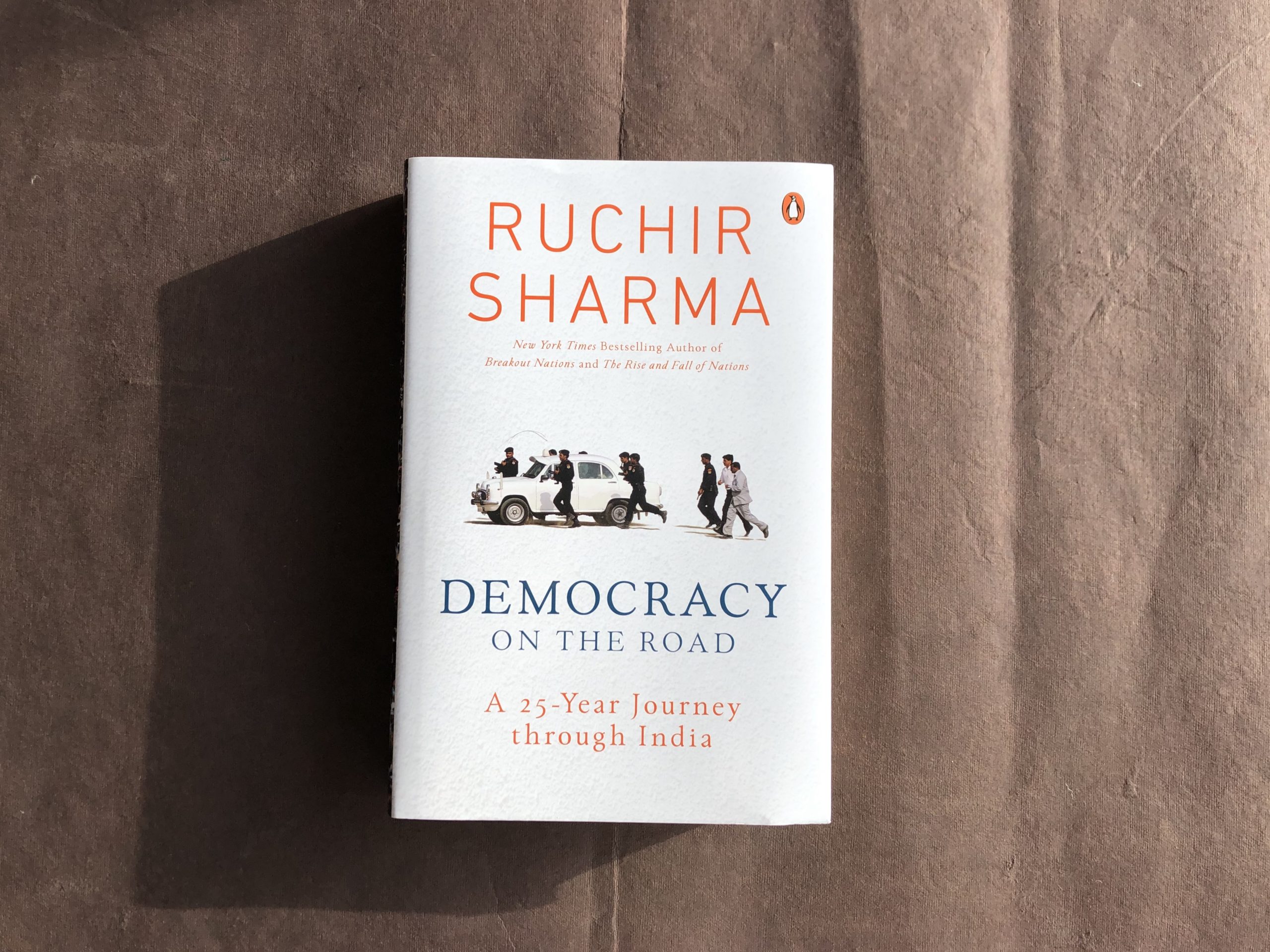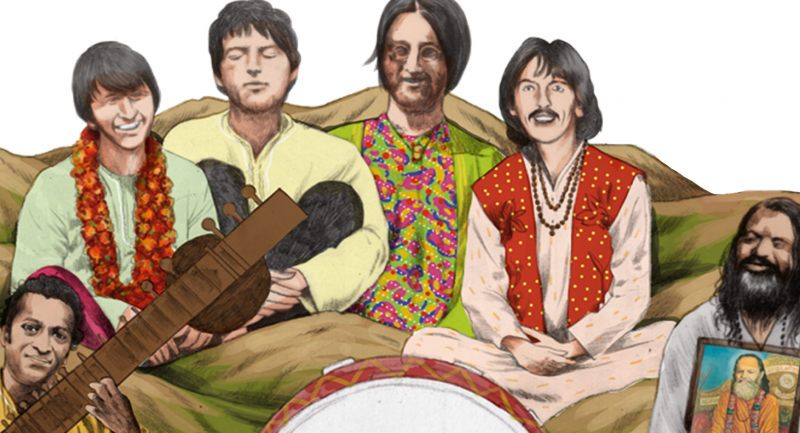
On the eve of a landmark general election, Ruchir Sharma offers an unrivalled portrait of how India and its democracy work, drawn from his two decades on the road chasing election campaigns across every major state, travelling the equivalent of a lap around the earth. Democracy on the Road takes readers on a rollicking ride with Ruchir and his merry band of fellow writers as they talk to farmers, shopkeepers and CEOs from Rajasthan to Tamil Nadu, and interview leaders from Narendra Modi to Rahul Gandhi.
Excerpted here is the author’s encounters with Mayawati as well as her journey in politics.
All of his rivals were accusing Mulayam of running a deeply corrupt administration that was lining the pockets of his fellow Yadavs. Into this breach stepped Mayawati, who aimed to build a winning plurality with the support of castes alienated by Mulayam’s Yadav centric administration. To build on her rock-solid base among Dalits, Mayawati decided on a bold strategy, reaching out to Brahmins, who are politically powerful everywhere but at 10 per cent of the population, double the India average, are particularly important in this critical state. Accustomed to a position of great power, the Brahmins felt marginalized by the Yadav government, but drawing them in to support Mayawati would not be easy: no one had forgotten her party’s old call on Dalits to ‘beat all the upper castes with shoes’. Mayawati appealed to Brahmins with an offer of power, not aid or job reservations. In fact, she didn’t campaign actively, appearing at one or two rallies a day—rather than the usual eight or nine typical of any state leader around election time. Instead, she focused her attention on a detailed and well-researched effort to find candidates—including Brahmin ones—who had the best chance to win in each constituency.
At this point in her career, Mayawati was becoming more and more dictatorial in her leadership of the BSP. It had no number two, no succession plan, no plan to make one. Reports from her camp said that Mayawati was subject to increasingly violent mood swings, that staff cowered in her presence, and that she single-handedly collected and managed the party’s funds. On her birthday, supporters came to her home and placed cash donations directly in her hands.
Mayawati personally picked BSP candidates and assigned them to constituencies. She was also said to be turning inward, increasingly shielding herself from the press and the outside world, and speaking only to her party lackeys.
When the results came in, Mayawati won more comfortably than we expected. She took a chunk of Brahmin and other upper caste voters disillusioned with the BJP. Coupled with her usual Dalit support, that was enough to propel Mayawati to power. With a little more than 30 per cent of the total vote, her BSP won 208 of the 400 seats in the UP assembly. It was the first time a Dalit party had ever won an absolute majority in an Indian state election.
***
In the five years since we had seen Mayawati rise to become chief minister of Uttar Pradesh, she had grown more and more regal. Other chief ministers had encouraged a cult of personality but none on the same scale as Mayawati, who was building towering statues of herself and her party symbol, the elephant, all over the state and its capital. When she came to power, Lucknow was building the ambitious new Ambedkar Park, and she had added as its centerpiece a monument to herself and other Dalit leaders, surrounded by elephants. In 2007, Mayawati had won by courting Brahmin voters and became the first important Dalit leader to draw significant upper-caste votes. But the taboo-shattering alliance soon unravelled.
Many of her Dalit supporters were angry at Mayawati for giving top posts to Brahmins, and by 2012, Mayawati had not only dumped the Brahmins as allies, she was blaming them for the corruption in her government.
We attended a Mayawati rally in Ghatampur, just outside the city of Kanpur, where the warm-up songs praised her as the Goddess of Justice, the Lioness of UP and the Iron Lady. Around 60,000 people poured into the rally grounds, most of them Dalits, waving the blue flag of the BSP and listening raptly to Mayawati’s every word, despite the fact that she was reading from a prepared text, barely making eye contact. Mayawati allowed very few other leaders on her stage, leaving the impression that she was accompanied mainly by a large fan that blew only on her. To the Dalits of UP, Mayawati was more a hero than ever, and few if any begrudged her regal airs. To the rest, she was running a government mired ever more deeply in corruption and favouritism for her own community. Stories abounded about how she personally dispensed all her party’s campaign funds, and distributed nominations to the highest bidders.
***
…Mayawati would ride her bicycle around town, talking to voters, breaking bread with them in their homes. These bonds helped propel Mayawati into the Lok Sabha seat representing Bijnor in 1989, but that was then. As her name and fame grew and Mayawati moved on to the chief minister’s office in Lucknow, her Bijnor supporters had come to see her more as the national hero of the Dalits, less as one of their own. Indian politics had, if anything, grown more intensely local.
Mayawati had long since abandoned her 2007 promise to run a government in ‘everyone’s interests’, and seemed to be retreating back into her caste comfort zone. A founding slogan of her party was a rallying cry to Dalits and a threat to Brahmins: ‘Vote Hamara, Raj Tumhara, Nahin Chalega, Nahin Chalega.’ The vote is ours but the power is yours, this can’t go on. Now, she was telling Dalits at her rallies: ‘Satta ki chabi hum isse jaane nahin denge.’ We got hold of the key to power and we cannot let it go.
Indian elections are lost by the incumbent more often than they are won by the challenger, and this was a prime example: Mayawati was toppled by her own self-infatuation, her statues and her failure to fix run-down schools with absentee teachers. With so many parties competing in winner-take-all system, a small swing in the vote is enough to oust a government. Between 2007 and 2012 about 5 per cent of the vote swung from Mayawati’s party to the Yadav’s, and that was enough to dethrone Mayawati and put the Samajwadi Party in power with a solid majority in the state assembly.
When Mayawati’s helicopter landed, three hours late, they were waiting and eager, shouting, ‘Behenji tum sangharsh karo, hum tumhare saath hain.’ Sister you keep fighting, we are with you. They spoke of Mayawati as a hero who had refused to marry so that she could devote herself to fighting for the Dalits, and no one in the crowd begrudged for a second her increasingly regal ways. Let other politicians dress humbly, all in white to appear ascetic and close to the masses, Mayawati dressed up, hair dyed black, carrying a designer handbag, wearing diamond earrings and a fancy white shawl in the 38-degree heat.
Mayawati called the BJP a party of tainted candidates, criminals and defectors from other parties, and ridiculed it as the ‘Jumla Party’, the party of empty gimmicks. She accused the BJP of stashing its own cash away in safe havens before Modi withdrew all the big bills from circulation, of doing nothing to check rising attacks against Dalits, and of plotting to abolish the system that reserves a share of government posts for the backward castes. But there was also a strong caste tension between Mayawati and Akhilesh. Her vote base is the lowest castes who work as landless labourers in rural areas, while his Yadav vote base, one rung up the caste ladder, often works as supervisors overseeing Dalits and are thus often seen as their most direct oppressors. This clash was magnified by the general stereotype, which Mayawati played on relentlessly, of Yadavs as aggressive bullies. She promised to end the Yadavs’ lawless ‘jungle raj’, and put Samajwadi Party crooks behind bars. For all the cultural differences between south and north, Jayalalithaa shared much with regional leaders like Mayawati in UP or Mamata Banerjee of West Bengal, whom we would see in action on later trips. They were ‘supremos’, big party bosses who ruled their parties with unquestioned authority. Many supremos are men, like the Yadavs of both Bihar and UP, and a growing number are, like Modi, single. What bound the three leading female supremos together was that they were all single, and had risen in the man’s world of politics by sheer force of will.
On the eve of a landmark general election, Ruchir Sharma, in Democracy on the Road, offers an unrivalled portrait of how India and its democracy work, drawn from his two decades on the road chasing election campaigns across every major state, travelling the equivalent of a lap around the earth.









